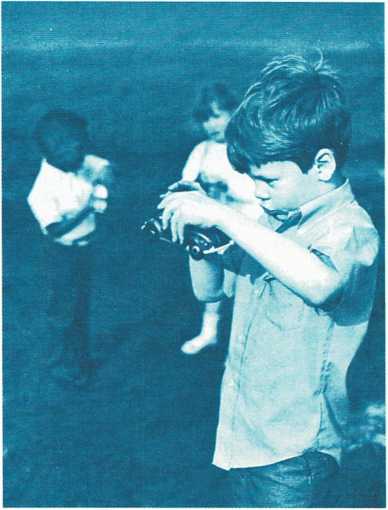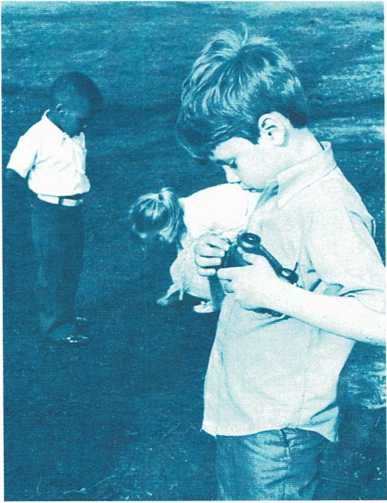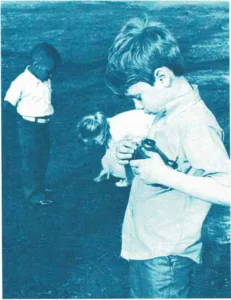Near-sightedness – Nightmares
Near-sightedness (myopia) is a defect in sight. A near-sighted child
sees close objects fairly well, but distant objects are blurred. The
reason for this is that the eyes are longer from front to back than the
normal eye, and light rays from an object are brought into focus too far
in front of the retina.
Near-sightedness usually develops in childhood and adolescence. It is
rarely present at birth. A near-sighted child may hold things close to
see them; but so will a far-sighted child on occasion. Near-sighted
children may also keep their eyelids partially closed, making a tiny
slit that helps them to see more clearly.

If a child is near-sighted, the world may look like this
photograph—near objects are in focus but distant objects are
blurred.

When a near-sighted child wears corrective glasses, distant objects
are brought into focus.
If you think your child is near-sighted, consult your doctor. An eye
examination may be in order and glasses may be prescribed. Near-sighted
children should have their eyes checked biannually for the first few
years, then annually. A child with nearsighted parents should have an
eye examination before entering school, because there is a family
tendency toward near-sightedness.
It is recommended that all children have a complete eye examination at 3
years and periodically thereafter, [r.o.s.]
Nephritis is a general term for several inflammatory diseases that
affect the kidneys. It most often follows a streptococcus infection,
usually a sore throat. Generally, it does not affect children under 3.
Nephritis may be chronic—slow to develop, long lasting, and
incurable—or it may be acute —quick to develop, of short duration,
and easily cured. Acute nephritis is a more common type found in
children.
Acute nephritis varies in severity. Some children become seriously ill,
but the outlook is almost always excellent. Generally, acute nephritis
begins from one to three weeks after an untreated streptococcal
infection. The child’s urine often contains blood, giving the urine a
smoky color similar to that of a cola drink. The child may also be tired
and have a fever, severe headache, and swelling around the eyes.
Recovery usually begins in a week or two. [m.g.]
See also Urinary disturbances
Nightmares. A young child—especially between the ages of 2 and
5—may frequently wake from sleep because of a dream, usually a
frightening one. After such a dream, your child needs to be comforted.
Speak to the child soothingly and encourage the child to tell you about
the dream. Listen carefully, even to a garbled account.
Night terrors usually occur 90 to 100 minutes after the child has gone
to sleep. The child suddenly sits up, is frightened, and wants to be
consoled. Episodes last from seconds to several minutes and usually are
not remembered by the child the following morning.
There is no way to prevent bad dreams. But if your child has frequent
nightmares, consult your doctor, [m.g.]
See also **Sleep

